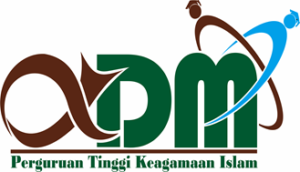Supplier Selection Analysis Using Minmax Multi Choice Goal Programming Model
Abstract
Production control, inventory and distribution is an important factor in trading activities. These three factors are discussed in a system called Supply Chain Management (SCM). Procurement of goods from a company or trading business related to suppliers. In some cases, there are several supplier that can be assessed by considering certain factors. In certain cases, the data from several factors that are considered are uncertainty, so the fuzzy approach can be used. The MINMAX Multi Choice Goal Programming model can be used to solve fuzzy supplier selection problems with linear membership function. It can be applied to selecting supplier of Brastagi Oranges. There are four suppliers, namely Jaya, Mako, Baros. Gina. There are three factor to consider, cost, quality and delivery. The decision maker select the best supplier for ordering 17000 kg Brastagi oranges. The results, the best supplier is Gina with an order quantity of 10000 kg and Mako with a total order of 7000 kg
Keywords
Full Text:
PDFReferences
R. Kiani, M. Goh, and N. Kiani, “Supplier Selection with Shannon Entropy and Fuzzy TOPSIS in the Context of Supply Chain Risk Management,” Procedia - Soc. Behav. Sci., vol. 235, no. October, pp. 216–225, 2016.
H. Ho, “The Supplier Selection Problem of a Manufacturing Company using the Weighted Multi-Choice Goal Programming and MINMAX Multi-Choice Goal Programming,” Appl. Math. Model., vol. 75, pp. 819–836, 2019.
A. Negahban and M. Dehghanimohammadabadi, “Optimizing the Supply Chain Configuration and Production-Sales Policies for New Products over Multiple Planning Horizons,” Int. J. Prod. Econ., vol. 196, pp. 150–162, 2018.
A. Ahmadi-javid and P. Hoseinpour, “A location-Inventory-Pricing Model in a Supply Chain Distribution Network with Price-Sensitive Demands and Inventory-Capacity Constraints,” Transp. Res. PART E, vol. 82, pp. 238–255, 2015.
H. Ghaderi, A. Moini, and M. S. Pishvaee, “A Multi-Objective Robust Possibilistic Programming Approach to Sustainable Switchgrass-Based Bioethanol Supply Chain Network Design,” J. Clean. Prod., vol. 179, pp. 368–406, 2018.
J. H. M. Manders, M. C. J. Caniëls, and P. W. Th, “Exploring supply chain fl exibility in a FMCG food supply chain,” J. Purch. Supply Manag., vol. 22, no. 3, pp. 181–195, 2016.
E. Malinowski, M. H. Karwan, J. M. Pinto, and L. Sun, “A mixed-integer programming strategy for liquid helium global supply chain planning,” Transp. Res. Part E, vol. 110, no. July 2017, pp. 168–188, 2018.
X. Zheng, M. Yin, and Y. Zhang, “Integrated Optimization of Location , Inventory and Routing In Supply Chain Network Design,” Transp. Res. Part B, vol. 121, pp. 1–20, 2019.
Z. Qin, “Uncertain Random Goal Programming,” Fuzzy Optim. Decis. Mak., vol. 17, no. 4, pp. 375–386, 2018.
S. . Barik, “Probabilistic Fuzzy Goal Programming Problem Involving Pareto Distribution : Some Additive Approaches,” Fuzzy Inf. Eng., vol. 7, pp. 227–244, 2015.
P. Biswas, “Fuzzy Goal Programming Approach to Solve Linear Multilevel Programming Problems using Genetic Algorithm,” Int. J. Comput. Appl., vol. 115, no. 3, pp. 10–19, 2015.
C. Chang, “Multi-choice goal programming model for the optimal location of renewable energy facilities,” Renew. Sustain. Energy Rev., vol. 41, pp. 379–389, 2015.
L. Chen, W. Ko, and F. Yeh, “Approach Based on Fuzzy Goal Programming and Quality Function Deployment For New product Planning,” Eur. J. Oper. Res., vol. 259, no. 2, pp. 654–663, 2016.
E. Susanti, O. Dwipurwani, and E. Yuliza, “Optimasi Kendaraan Pengangkut Sampah Menggunakan Model Fuzzy Goal Programming,” J. Mat., vol. 7, no. 2, pp. 119–123, 2017.
R. Jayaraman, C. Colapinto, D. La, and T. Malik, “A Weighted Goal Programming model for planning sustainable development applied to Gulf Cooperation Council Countries,” Appl. Energy, vol. 185, no. 2, 1 January 2017, pp. 1931–1939, 2016.
M. Dash and R. Hanuman, “A Goal Programming Model for Working Capital,” J. Manag. Sci., vol. 5, no. 1, pp. 7–16, 2015.
L. Chen, J. Peng, and B. Zhang, “Uncertain Goal Programming Models for Bicriteria Solid Transportation Problem,” Appl. Soft Comput. J., 2016.
DOI: https://doi.org/10.18860/ca.v7i1.12944
Refbacks
- There are currently no refbacks.
Copyright (c) 2021 Novi Rustiana Dewi, Eka Susanti, Bambang Suprihatin, Endro Setyo Cahyono, Anggun Permata, Nurul Fadhila Yanita

This work is licensed under a Creative Commons Attribution-ShareAlike 4.0 International License.
Editorial Office
Mathematics Department,
Universitas Islam Negeri Maulana Malik Ibrahim Malang
Gajayana Street 50 Malang, East Java, Indonesia 65144
Faximile (+62) 341 558933
e-mail: cauchy@uin-malang.ac.id

CAUCHY: Jurnal Matematika Murni dan Aplikasi is licensed under a Creative Commons Attribution-ShareAlike 4.0 International License.



-CAUCHY26.png)

